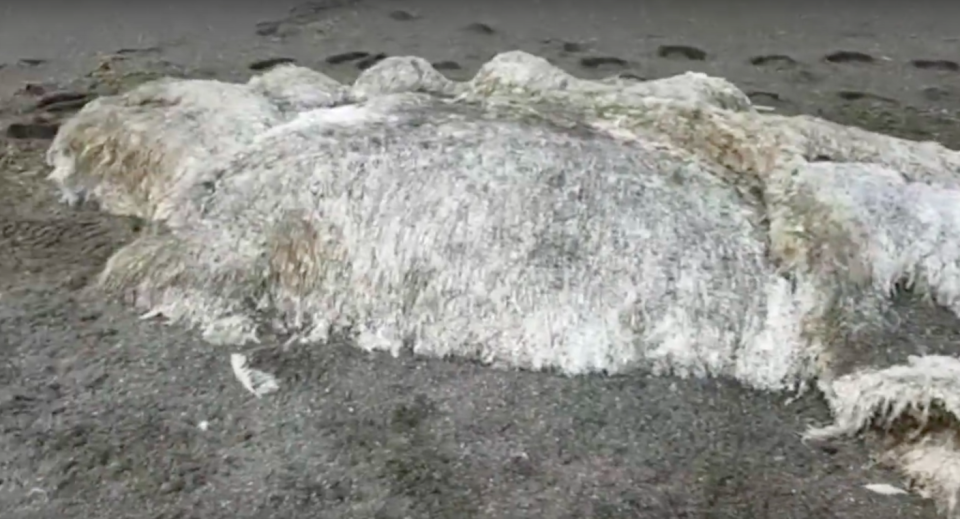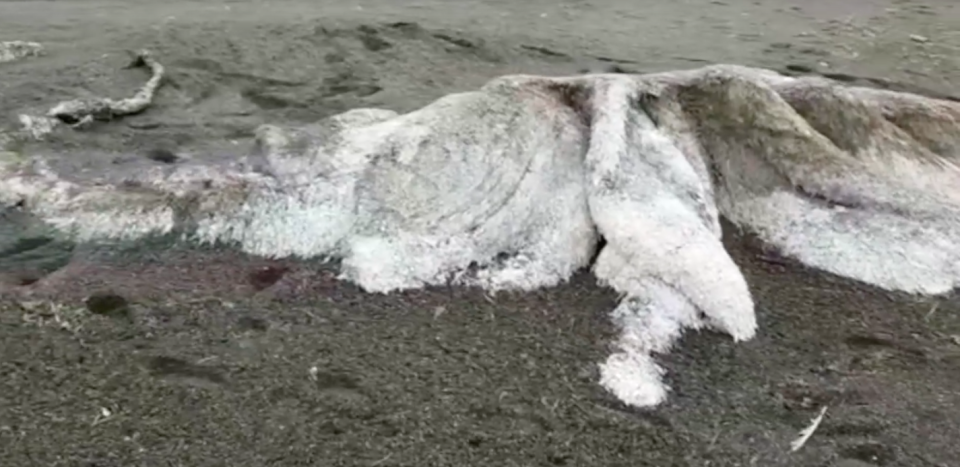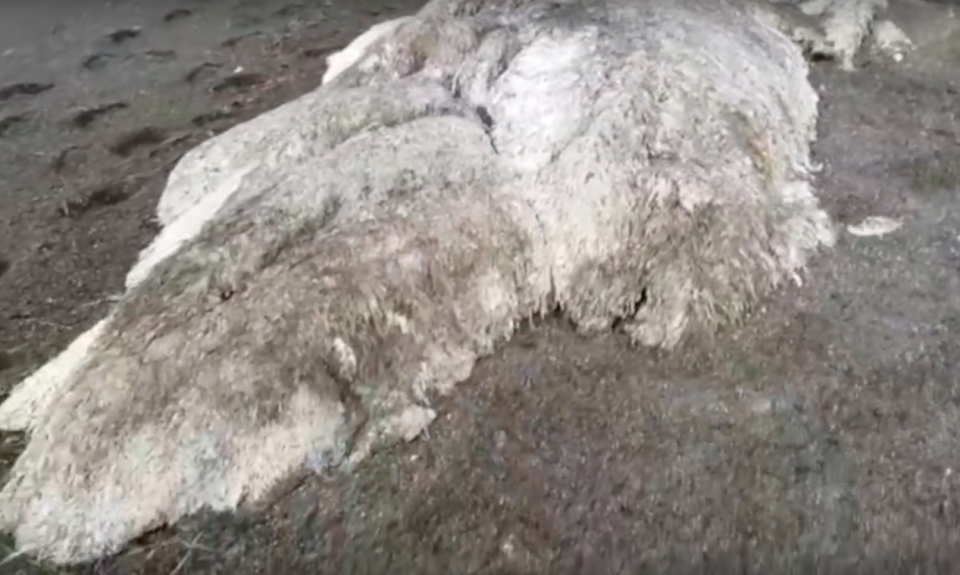Watch: Mystery ‘hairy sea monster’ washes up on Siberian beach - and no one know what it is
This is the mysterious fur-covered sea creature that washed up on a beach in Siberia and has left people baffled.
The remains of the giant, hairy ‘monster’ were discovered on the shore of the Bering Sea, on the Pacific side of the Kamchatka peninsula.
Its dirty white fur gives no clues as to what it might be, and the mystery beast does not appear to have eyes or a head.


At the end of the remains appears to either be a long tail or tentacle, while on one side of it appears to be a series of pipe-like structures.
One thing that is for sure is that the remains kicked up quite a stink for the people who filmed it.
Speculating on wha it might be, witness Svetlana Dyadenko said: ‘The most interesting thing to me is that the creature is covered with tubular fur.
MOST POPULAR ON YAHOO NEWS UK
In pictures: The top 10 most liveable cities in the world
Westminster terror attack: Theresa May says Britain under ‘severe’ threat after huge rise in active terrorist investigations
Baby boy dies from cold sore virus less than two weeks after birth
Genoa bridge collapse: Rescue workers hunt for survivors among the rubble as first victims named
Celebrity Big Brother 2018: Line-up ‘confirmed’
‘Could it be some ancient creature?
‘I wish scientists could inspect this enigma that the ocean threw at us.’
People who watched the clip suggested that the remains could be a ‘hairy octopus’, a ‘giant squid’.

One person even suggested the remains could be the remnants of a wooly mammoth that was frozen in ice under the sea before the summer heat thawed it out.
The carcass has also been labelled a ‘globster’ – the term used to describe all manner or large sea creatures that are unidentified.
Marine biologist Sergei Kornev said that the monster could be part of a decaying whale.

He told the Siberian Times: ’Under the influence of the sea, time and various animals, from the smallest to the largest, a whale often takes on bizarre forms.
‘This is only a part of a whale, not a whole one.’

 Yahoo News
Yahoo News 
